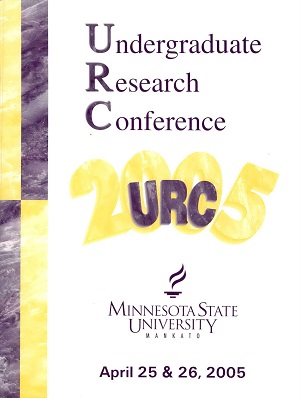Diabetes Screening Among Uninsured and Underinsured Patients Using Random Blood Glucose Samples as an Indicator
Location
CSU 253
Start Date
25-4-2005 1:15 PM
End Date
25-4-2005 3:15 PM
Student's Major
Family Consumer Science
Student's College
Allied Health and Nursing
Mentor's Name
Sarah Klammer Kruse
Mentor's Department
Family Consumer Science
Mentor's College
Allied Health and Nursing
Description
Diabetes is often referred to as a silent disease because patients may have few overt symptoms. Many patients who have Type 2 Diabetes may not be diagnosed for 7 to 10 years after the disease has begun. The purpose of this study was to assess the need for a routine screening process for diabetes among uninsured and underinsured patients in order to provide early intervention for glucose intolerance and diabetes. In a random blood glucose test the patient is not required to fast prior to the administration of the test. Glucose intolerance is defined as a fasting blood glucose test result in the range between 100 and 125 mg/dL or a non-fasting blood glucose test result between 140 and 199 mg/dL. If patients with glucose intolerance could be identified, intervention by diet and exercise may be able to delay the onset of diabetes. The outcome of this study will provide an indication of whether or not routine random blood glucose screening should be conducted on a regular basis at community health clinics.
Diabetes Screening Among Uninsured and Underinsured Patients Using Random Blood Glucose Samples as an Indicator
CSU 253
Diabetes is often referred to as a silent disease because patients may have few overt symptoms. Many patients who have Type 2 Diabetes may not be diagnosed for 7 to 10 years after the disease has begun. The purpose of this study was to assess the need for a routine screening process for diabetes among uninsured and underinsured patients in order to provide early intervention for glucose intolerance and diabetes. In a random blood glucose test the patient is not required to fast prior to the administration of the test. Glucose intolerance is defined as a fasting blood glucose test result in the range between 100 and 125 mg/dL or a non-fasting blood glucose test result between 140 and 199 mg/dL. If patients with glucose intolerance could be identified, intervention by diet and exercise may be able to delay the onset of diabetes. The outcome of this study will provide an indication of whether or not routine random blood glucose screening should be conducted on a regular basis at community health clinics.
Recommended Citation
Hastings, Sara and Julie Boll. "Diabetes Screening Among Uninsured and Underinsured Patients Using Random Blood Glucose Samples as an Indicator." Undergraduate Research Symposium, Mankato, MN, April 25, 2005.
https://cornerstone.lib.mnsu.edu/urs/2005/poster-session-A/5



